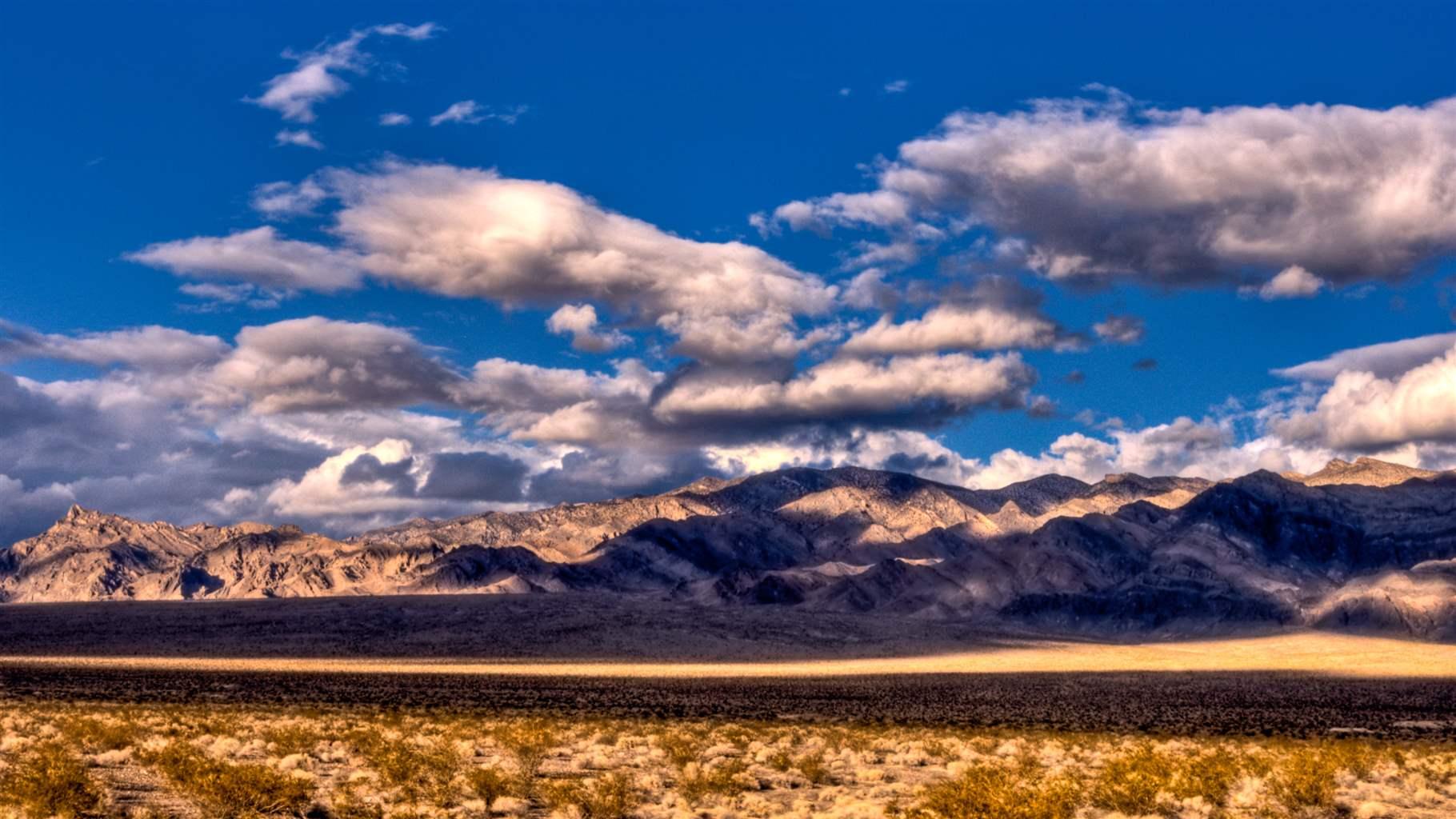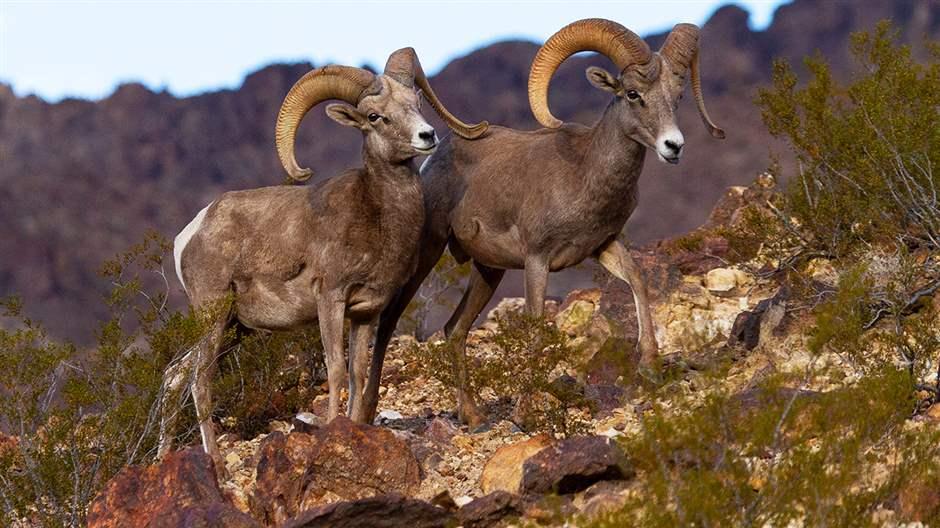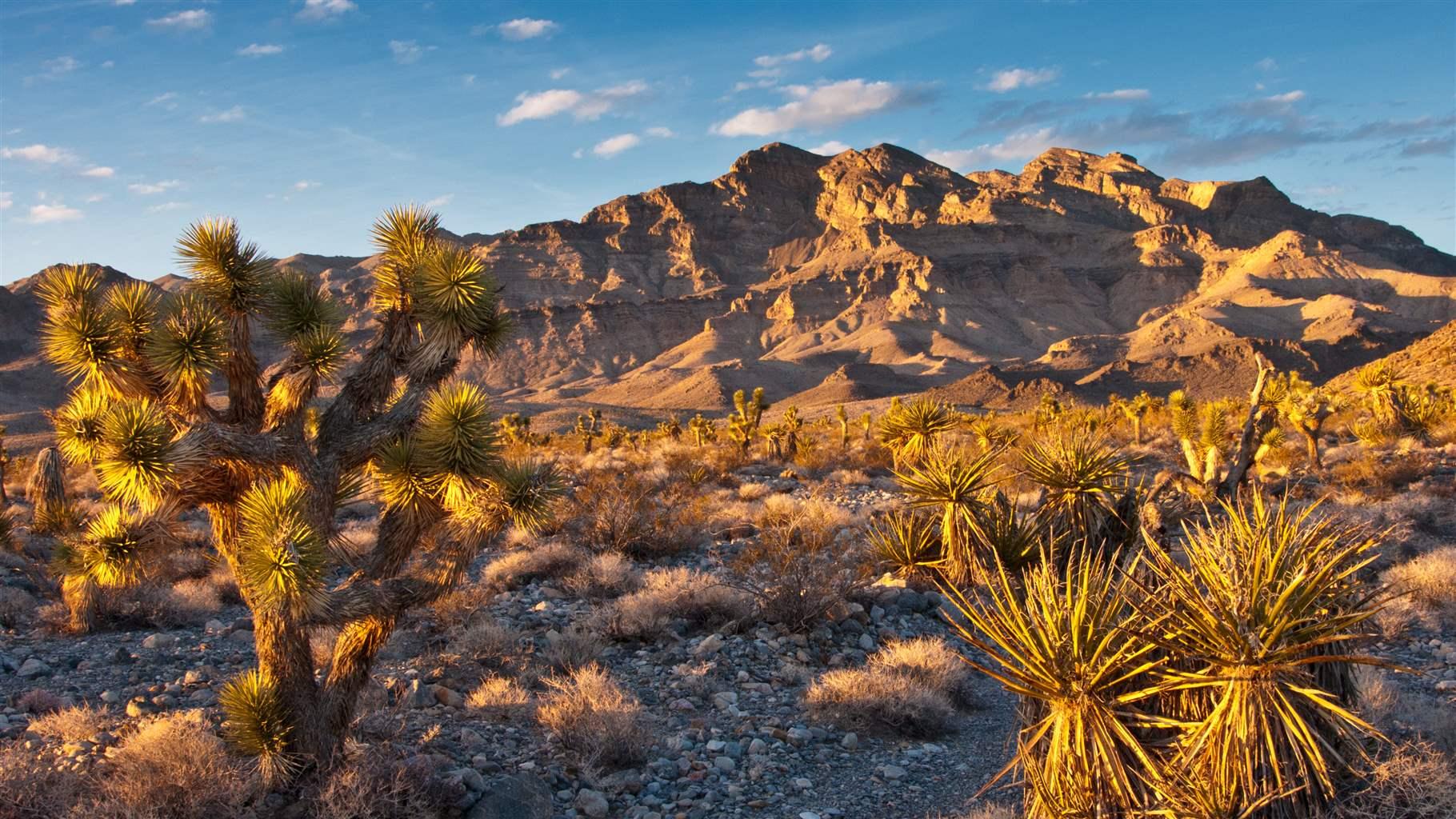Nevada Wildlife Refuge Would Gain Wilderness Status Under Bill in U.S. Congress
Bipartisan measure seeks to protect 1.3 million acres of wilderness while preserving Air Force training grounds

The 1.6-million-acre Desert National Wildlife Refuge in southern Nevada is the largest wildlife refuge in the lower 48 states; only the Arctic Refuge in Alaska is bigger. This classic Mojave Desert landscape—highlighted by the profusion of Joshua trees, which grow only in the Mojave—has been safeguarded since 1936, when Franklin D. Roosevelt established the Desert Game Range to protect the native desert bighorn sheep and their habitat, although in the 1940s the U.S. Air Force gained access to the western half of the refuge for use as a training ground.
Now, Congress is considering legislation that would designate 1.3 million acres of the refuge as wilderness while preserving the military’s use of part of the area. The wilderness would be the largest ever designated in Nevada. The notion to safeguard this remarkable landscape dates to 1971, when the U.S. Bureau of Sport Fisheries and Wildlife, a predecessor of the U.S. Fish and Wildlife Service, proposed 1.4 million acres as wilderness.
The Pew Charitable Trusts joins a host of advocates in encouraging Congress to pass this bill—the Desert National Wildlife Refuge and Nevada Test and Training Range Withdrawal and Management Act (S.B. 3145/H.R. 5606)—which was introduced by Senator Catherine Cortez Masto and Representative Steven Horsford, both Nevada Democrats, and co-sponsored by the entire Nevada delegation. The introduction was timed ahead of a 2021 deadline for the Department of Defense to ask Congress to reauthorize use of refuge land as a training range; the agency must ask Congress for that authorization every 20 years. The Air Force operates on more than 2.9 million acres, of which more than 800,000 are in the refuge. The bill would maintain that training range, and even slightly expand the agency’s jurisdiction in the refuge, while safeguarding wildlife habitat, cultural sites, and outdoor recreation space for generations to come.
The refuge includes vast stretches of intact desert landscape, including the largest roadless area in Nevada—the Sheep Range—and is among the most ecologically diverse areas in the country. It is home to more than 500 plant species and 320 bird species, including the golden eagle, roadrunner, and pygmy owl. Elevations range from about 2,500 feet to almost 10,000 feet. At lower elevations, which are hot and dry, Mojave yuccas and creosote bush are common. Joshua trees are found at higher elevations, where there is more rainfall. Above 6,000 feet, pinyon pine and juniper become plentiful, giving way to ponderosa pine, white fir, and, at the highest elevations, bristlecone pine.
The legislation grants the Air Force access to an additional 100,000 acres of refuge land for training purposes and operational needs and creates procedures to improve coordination between the Air Force and the U.S. Fish and Wildlife Service in the lands they co-manage. The bill also requires the Air Force to allow access to the lands for cultural and religious purposes and creates an intergovernmental executive committee—with Native American representation—to ensure that tribes’ needs are considered in the management of these lands.
Further, the legislation preserves public access to the 70-mile dirt-and-gravel Alamo Road, which has been singled out by the U.S. Fish and Wildlife Service as one of the scenic highlights of the refuge. This rugged road connects the refuge to the Pahranagat National Wildlife Refuge and the town of Alamo and includes access to trails leading to Hayford Peak, the highest point in the Sheep Range, and to a locally renowned stand of ponderosa pines known as the Hidden Forest.
Numerous stakeholders provided input on the desert refuge bill, including the Nevada delegation, the Department of Defense, the Department of the Interior, the state of Nevada, the Moapa Paiute and the Las Vegas Paiute tribes, and the conservation and outdoor recreation communities.
The Nevada delegation will be working to pass this legislation before the end of the year because the military’s authorization to use the Nevada Test and Training Range expires in 2021. Pew is joining with local tribes, conservationists, businesses, and sportsmen to protect the refuge and support passage of this bill.
John Gilroy directs The Pew Charitable Trusts’ U.S. public lands and rivers conservation program.









